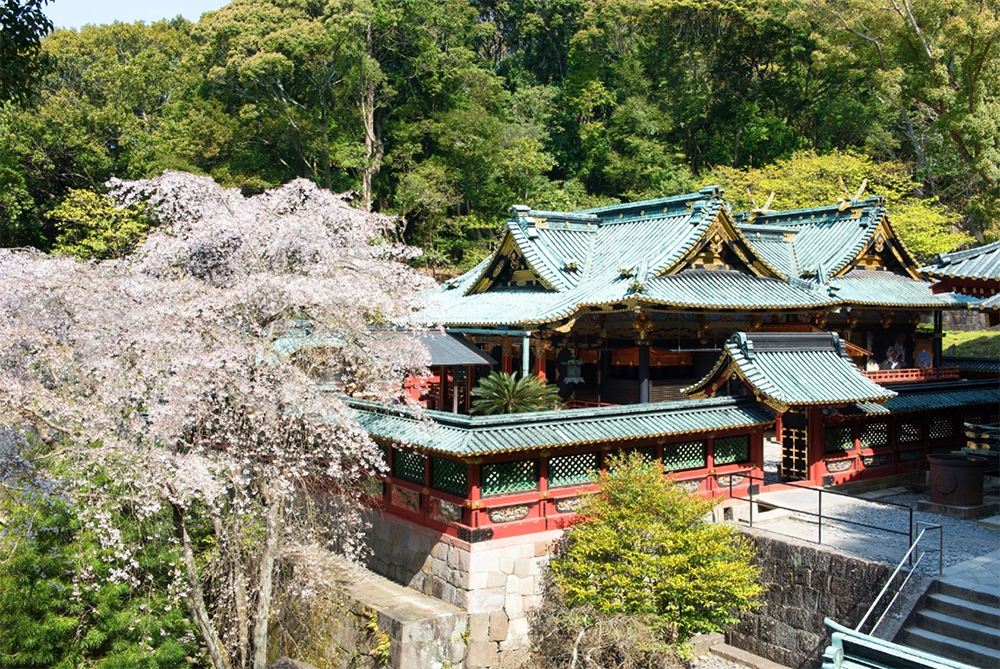久能山東照宮 Kunozan Toshogu Shrine
1603年に征夷大将軍に任命され、江戸幕府を樹立した徳川家康公。265年間に渡り江戸時代は続きます。1607年、徳川家は現在の静岡市である駿府に壮大な城を建てました。家康公は1616年4月17日に薨去され、同じ日に海抜およそ270mにある久能山の山頂近くに埋葬されました。家康公の死後、家康公を祀るため、久能山東照宮は19か月という短い期間で建立されました。2010年12月には御社殿(本殿、石の間、拝殿)が国宝に指定されています。境内には家康公の神廟はもちろん、江戸幕府の歴代将軍に関係する文化財2000余点を収蔵する久能山東照宮博物館など、家康公ゆかりの空間が広がります。 この、久能山東照宮に行くためには山の麓から17曲り1159段の石段を登る方法と、日本平山頂からロープウェイを使う方法があります。ロープウェイ乗車時間は片道5分です。
Tokugawa Ieyasu who was appointed Shogun in 1603 and established the Edo Bakufu government. This lead to 265-years of peace known as the Edo era. In 1607, Tokugawa built a magnificent castle in Sumpu, which is present day city of Shizuoka. He passed away on April 17, 1616 and was buried on that same day near the summit of Mt. Kuno approximately 270 meters above sea-level. After Ieyasu’s death the Kunozan Toshogu Shrine was built in the short span of just19-months to enshrine Ieyasu. In December of 2010 the main hall, worship hall and cobblestone courtyard were registered as national treasures. Within the boundaries is the Kunozan Toshogu Museum which contains more than 2000 items of historical significance related to the Ieyasu, the Edo Shogunate and the line of General Shoguns. To get to this first Toshogu shrine there are 2-routes. One is from the base of the mountain that has 1159 stone steps making 17-turns that lead to the Kunozan Toshogu. The other way is using the ropeway (gondola) from the Nihondaira Plateau, where one can arrive at the base of the shrine office in just 5-minutes.

